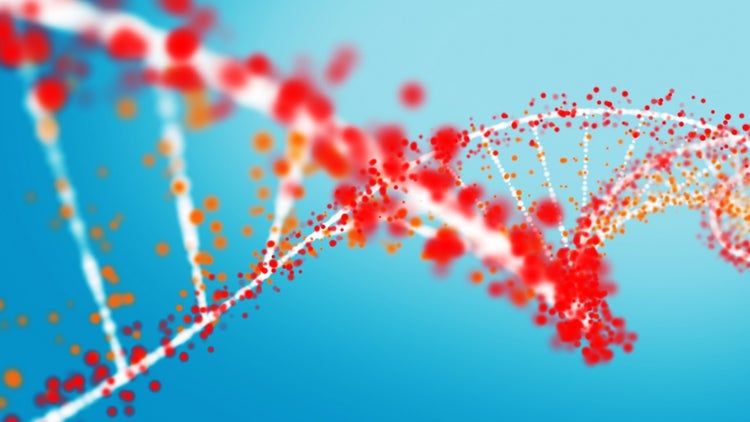Exercise Your DNA: How Exercise Improves Your DNA

You’ve seen the countless motivational quotes: “Your health is your wealth.” “Take care of your body. It’s the only place you have to live.” That’s because most people know exercising helps you in becoming heathier in many ways like managing weight, reducing your chances of cardiovascular disease and diabetes, improving brain function and sleep, strengthening muscles and bones. …Yes, the list goes on and on. Yet how exercise improves your health lies in your DNA.
Let’s see what you’re made of
Genes make up your DNA. About one-third of your looks and your body’s functions are based on your genes, or genetic phenotype. You and your siblings may look alike or look like polar opposites, yet you share a similar DNA.
Your body contains more than 600 exercise-related genes responsible for regulating your body weight and energy metabolism. Some genes like the FTO (fat mass and obesity) and the MC4R (melanocortin-4 receptor) “determine” whether you’re predisposed to obesity. The ACE (angiotensin-converting enzyme) gene “determines” your predisposition to athleticism. Other genes “determine” whether you’re makeup is predisposed to long-endurance sports or sports requiring power.
You share a similar genetic makeup with your family members, yet your genes morph into “functional polymorphisms.” Morphing of your genes becomes a distinct pattern of your DNA truly determining the response of your body’s tissues.
Nature or nurture—epigenetics
Even if you claim you’re adopted, you can’t change your DNA. But you can change the way your DNA responds to many things in your life. Epigenetics, or the process of your genes changing, occurs via a process called methylation. Although methylation sounds like the process of passing gas, methylation is a process happening outside your genes. Methyl groups, or clusters of atoms, link together to the outside of your genes.
The atoms are like switches turning the gene “on” or “off” in responding to the biochemical signals from the body. Carrying the FTO gene may predispose you to obesity, yet you possess control in turning the switch off. Similarly, simply carrying the ACE gene doesn’t mean you’ll be winning Olympic gold medals if you don’t turn on the switch with dedicated training.
Epigenetic scientists have proved that the methylation process responds to lifestyle. This is why exposing yourself to certain chemicals, eating certain foods and exercise changes the methylation process, or changing patterns of the genes in your DNA. Therefore, you possess the power in turning the switches “on” or “off.”
Studies have shown that a single bout of exercise may change the behavior of your genes. Consistency in exercise shows more pronounced methylation, possibly changing methylation patterns for future generations. A 2014 epigenetic study conducted by Lindholm, et al. showed exercise can change the epigenetic landscape, which is the way your body’s tissues respond to outside information. Participants pedaled on one leg at a moderate intensity for 45 minutes, four times a week, for a period of three months.
No surprises! The leg that was exercised was stronger than the other. Interestingly, in examining DNA of both legs, the leg not exercised showed no change in its genetic makeup. The exercised leg had more than 5,000 new methylation patterns related to exercise. The new methylation patterns were made of the proteins enhancing health markers.
Using your remote control
Being a control freak may not be such a bad thing in turning your genetic switches “on” or “off.” Find your motivation. Use your determination. Take control of your environment.
- Motivation and determination
There is truth to many clichés. As it’s been said, “Motivation gets you moving. Determination keep you going.” In 1985, Edward L. Deci, Ph.D., and Richard M. Ryan, Ph.D., wrote the Self-Determination Theory. Essentially it says, intrinsic motivation drives your behavior. Your intrinsic motivation is driven by satisfying your autonomy, your competence, your relatedness.
Find your “why” for moving. A key factor giving direction for physical activity is your motive—what’s your motivation for health? Writing “I will …” and placing it right next to your athletic shoes, bathroom mirror or someplace readily seen cognitively drives attention to your intention. Giving purpose to your movement may keep you moving. For example:
- I will … have more energy to play with my kids or grandkids.
- I will … stop taking blood pressure medication.
- I will … run my first 5K or Sprint Spartan Race.
Be determined in turning “off” health-adverse genes and turning “on” those good health-promoting genes through movement.
- Autonomy: Identify or discover an exercise or physical activity you enjoy doing.
- Competence: If you enjoy it and are not yet good at it, keep going … practice builds competence. Or perhaps you’re finding that you’re already good at it, you’re having fun and it keeps you coming back.
- Relatedness: Find a training partner or join a group with similar interests to keep you going.
2. Environment and lifestyle
Be proactive in making small changes promoting physical activity in your life. For example:
- Have a good friend hide your TV remote control, if you tend to be a “couch potato.”
- Set your athletic shoes and clothes in your gym bag ready to go.
- Associate with a person or group promoting physical activity: Enlist a training partner, hire a personal trainer, or join a group fitness class or walking group.
- Remembering it’s OK to ask for help from friends and family or a knowledgeable fitness professional.
3. Small steps
Start small with small, attainable, active steps, and then build from there. Be patient with yourself. With consistency, physiological training adaptations happen about every four weeks. In this case, your environment dictates your behavior. Hence, those behaviors may influence your genetic makeup. Yes, turn “on” those health-promoting switches, exercising your DNA.
Photo credit: cokada, Getty Images